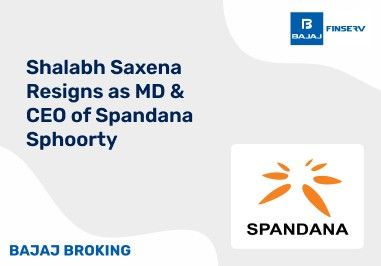BAJAJ BROKING
Tankup Engineers IPO is Open!
Open a Free Demat Account
Trade Now, Pay Later with up to 4x
Track Market Movers Instantly
Authorised Person vs Sub Broker
When you embark on your journey into the stock market world, remember that you can’t buy or sell stocks and securities directly. Trading in the stock market requires the assistance of intermediaries, such as stockbrokers or broking firms. These intermediaries have the authorization to handle the buying and selling of stocks and securities on your behalf through stock exchanges.
Given the complexity of financial instruments, various professional roles have emerged to help investors make effective investments. Among these roles, stockbrokers and sub-brokers play vital roles. However, it’s crucial to understand that these two roles are distinct, and investors should be aware of the difference between authorised person and sub broker.
In exchange for their services, these intermediaries charge fees or commissions, and they operate under the regulation of the Securities Exchange Board of India (SEBI). Regulations such as the SEBI Act, 1992, and Securities Contract Regulations, 1956, govern their activities.
Types of Stock Brokers
A stockbroker can take the form of a registered stockbroking firm or an individual professional. They specialise in buying and selling securities on behalf of their clients and levy brokerage fees for their services. Acting as a crucial intermediary between investors and the stock market, stockbrokers facilitate seamless transactions. To clarify the contrast, let’s explore the various categories of stockbrokers:
1. Full-Service Stockbrokers:
These stockbrokers offer comprehensive services, including advisory support, helping investors gain valuable insights into investment opportunities. Typically, their brokerage fees are tied to the total volume of executed trades. Full-service stockbrokers are typically well-established market players with a network of offices and branches nationwide.
2. Discount Brokers:
In contrast, discount brokers charge lower fees compared to their full-service counterparts. They do not provide advisory assistance or market research to guide clients towards suitable investment options. Usually, they charge a fixed fee for executing stock market transactions.
3. Brokers Offering Flat Brokerage:
These stockbrokers have gained popularity thanks to the increasing use of digital technology in trading. They represent a hybrid model, combining elements of both full-service and discount brokers by applying a flat-rate brokerage fee structure.
Also Read: Roles And Functions Of Sub brokers
Difference Between Authorised Person and Sub Broker
| Criteria | Authorised Person | Sub Broker |
| Meaning | A person appointed by a stockbroker and acts as an agent, gaining access to the trading platform of a stock exchange. | A sub-broker is a person who works on behalf of a trading member of a recognized stock exchange. |
| Registration | Just needs to fill an agreement form with the stockbroker. | Registered with SEBI |
| Initial deposit | Minimum ₹10,000 or NIL | ₹50,000 – ₹3,00,000 |
| Revenue sharing ratio | Mostly fixed on 20%-50% or a little more. | 50%-80% |
| Responsibility | Has slightly less responsibility than a sub-broker. | Acts like an extension branch of the stockbroker, so takes almost all responsibility of a stockbroker. |
| Agreement | Sub-broker enters into the tri-party agreement | AP enters into the two-party agreement. |
Also Read: Discount Broker vs Full-Service Broker: Which One Should You Choose?
Explaining Difference Between Sub Broker and Authorised Person
- Authorised Person vs Sub Broker Function:
A stockbroker operates independently and directly with clients, executing trades and managing investment portfolios. They often also serve as Depository Participants (DPs) for depositories like NSDL and CDSL, maintaining stocks and securities in electronic format. In contrast, a sub-broker acts as an intermediary, working on behalf of the main stockbroker. Their primary role is to expand the main stockbroker’s business network by sourcing new clients. It’s important to note that a sub-broker cannot function as a Depository Participant.
Stockbrokers are required to be registered with SEBI (Securities and Exchange Board of India). However, the category of “sub-broker” for registration was discontinued by SEBI in August 2018. All existing sub-brokers were mandated to transition to the category of “Authorised Person.” An Authorised Person can be an individual, firm, or entity appointed by a stockbroker to provide access to a trading platform.
Additional Read: What are the Benefits and Challenges faced by Sub Brokers in India?
- Authorised Person vs Sub Broker Revenue Sharing:
Sub-brokers have a broader set of responsibilities, entitling them to a higher share of revenue generated from clients. While the main stockbroker receives a smaller share, they benefit from the collective revenue generated by numerous sub-brokers operating under their umbrella.
- Authorised Person vs Sub Broker Brokerage:
Stockbrokers directly charge brokerage fees from clients for their services. Sub-brokers, on the other hand, are not allowed to charge brokerage fees directly to clients. They receive a specified portion of the revenue generated by the stockbroker.
- Authorised Person vs Sub Broker Importance:
Stockbrokers are crucial in the stock market ecosystem, ensuring liquidity and facilitating trading. They occupy a prominent position in capital markets. Sub-brokers, however, play a pivotal role in the expansion of stockbrokers’ businesses across different regions. They provide opportunities for new entrants to access the financial market as agents, utilising the stockbroker’s trading tools and services. Sub-brokers typically need to provide a deposit fee to establish their association with the stockbroker.
Also Read: Authorised person under FEMA
Conclusion
In summary, while stockbrokers are the primary actors in the stock market, sub-brokers serve as intermediaries who assist stockbrokers in reaching a broader client base and share in the revenue generated from those clients.Therefore, when you venture into stock market investments, it’s crucial to understand the difference between authorised person and sub broker. Both have unique roles in the stock market’s operation, with some similarities and differences. As you embark on your stock market journey, prioritise a trustworthy and dependable financial partner.
Additional Read: How to Become Sub Broker
Share this article:
Read More Blogs
Disclaimer :
The information on this website is provided on "AS IS" basis. Bajaj Broking (BFSL) does not warrant the accuracy of the information given herein, either expressly or impliedly, for any particular purpose and expressly disclaims any warranties of merchantability or suitability for any particular purpose. While BFSL strives to ensure accuracy, it does not guarantee the completeness, reliability, or timeliness of the information. Users are advised to independently verify details and stay updated with any changes.
The information provided on this website is for general informational purposes only and is subject to change without prior notice. BFSL shall not be responsible for any consequences arising from reliance on the information provided herein and shall not be held responsible for all or any actions that may subsequently result in any loss, damage and or liability. Interest rates, fees, and charges etc., are revised from time to time, for the latest details please refer to our Pricing page.
Neither the information, nor any opinion contained in this website constitutes a solicitation or offer by BFSL or its affiliates to buy or sell any securities, futures, options or other financial instruments or provide any investment advice or service.
BFSL is acting as distributor for non-broking products/ services such as IPO, Mutual Fund, Insurance, PMS, and NPS. These are not Exchange Traded Products. For more details on risk factors, terms and conditions please read the sales brochure carefully before investing.
Investments in the securities market are subject to market risk, read all related documents carefully before investing. This content is for educational purposes only. Securities quoted are exemplary and not recommendatory.
For more disclaimer, check here : https://www.bajajbroking.in/disclaimer
Our Secure Trading Platforms
Level up your stock market experience: Download the Bajaj Broking App for effortless investing and trading













